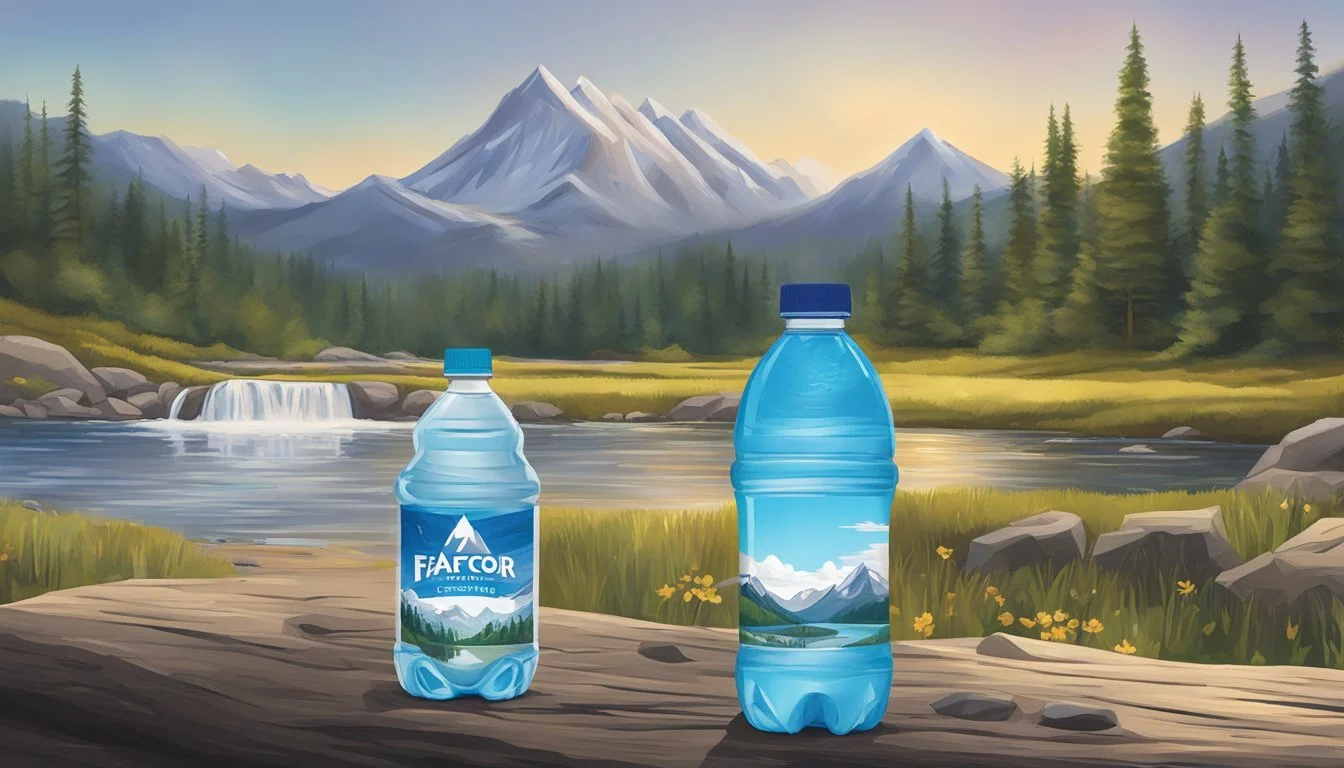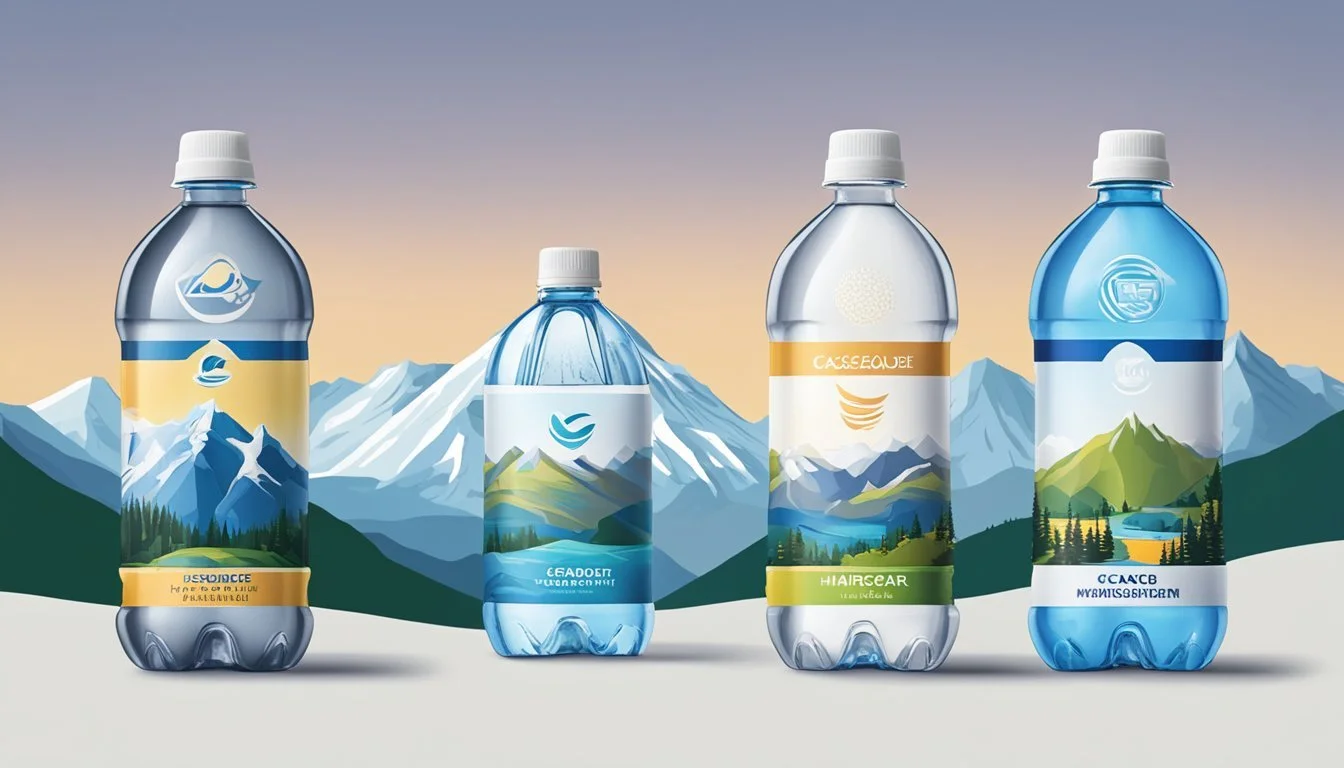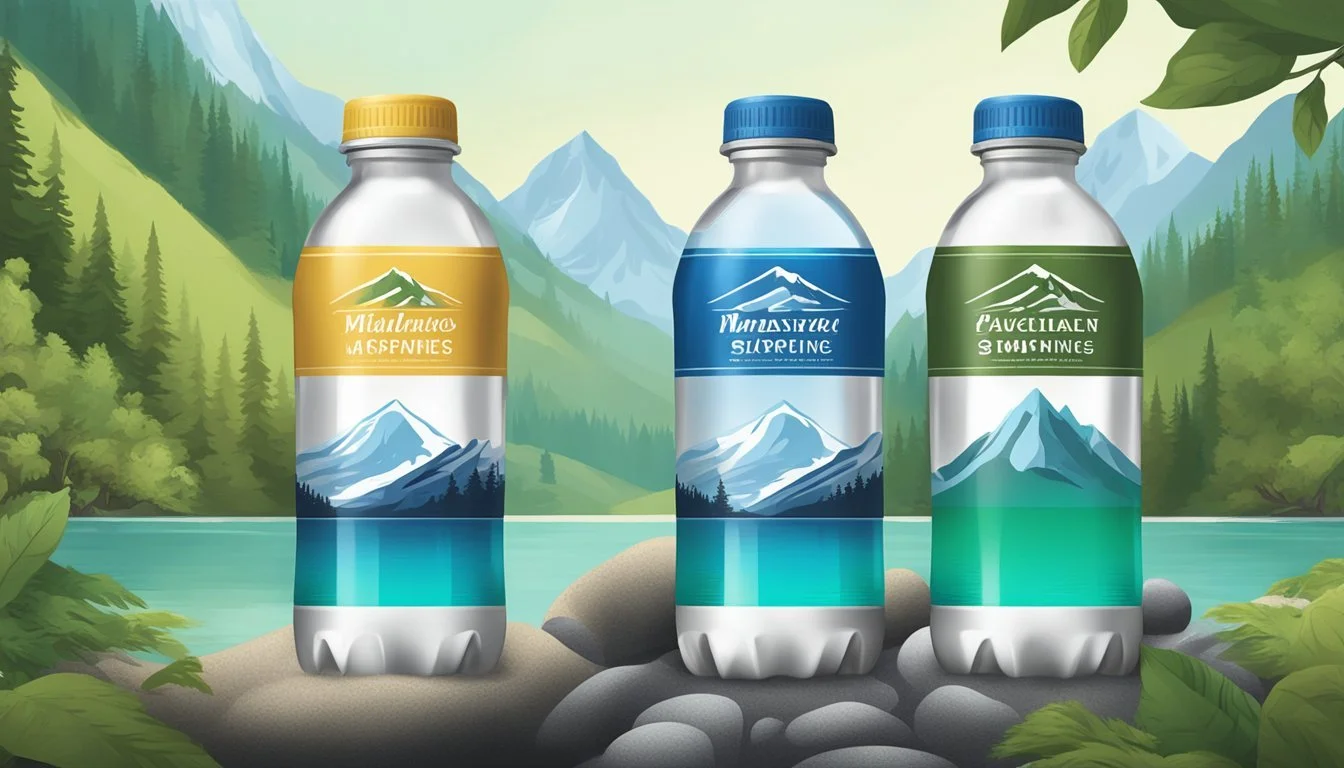Cascade Mountain vs. HFactor
Which Bottled Water is Better?
Choosing the right bottled water can be a challenge with so many brands available. Cascade Mountain and HFactor are two well-known names in the industry. Each offers unique features that cater to different preferences and needs.
Cascade Mountain water is known for its crisp and refreshing taste, sourced from pristine mountain springs. Its mineral content is naturally balanced, making it a popular choice for those who prioritize purity and natural origin in their drinking water.
HFactor, on the other hand, offers a different experience with hydrogen-infused water designed to provide potential health benefits. It's marketed towards those who are looking at cutting-edge hydration solutions. Their innovative approach appeals to consumers interested in the latest health trends.
Overview of Bottled Water
Bottled water is a popular choice for many due to its convenience and perceived purity. The industry has numerous brands ranging from large corporations to niche players.
Brands such as Nestlé Pure Life and Dasani are widely recognized. Different brands often highlight unique selling points like spring water sources or added minerals.
The quality of bottled water varies significantly. Some brands source their water from natural springs, while others use purified tap water. Spring water is often marketed as having natural minerals that can be beneficial for health.
There are health considerations to keep in mind. Some bottled waters contain added electrolytes and nutrients, while others might include sodium or artificial sweeteners. It's important to read labels to understand what you’re consuming.
The source of bottled water can also impact its taste and mineral content. Spring water is typically sourced directly from underground springs, while other types may undergo extensive purification processes to ensure quality.
Bottled water has become a multibillion-dollar industry, growing significantly over the past decade. This growth highlights its increasing importance in daily consumption.
When choosing bottled water, consider the brand, source, and any added ingredients to make an informed decision that aligns with your health and taste preferences.
Using tables or lists can also help compare different brands and their attributes effectively.
Brand Source Added Ingredients Nestlé Pure Life Purified Sodium, Sweeteners Evian Spring Water Natural Minerals Dasani Purified Minerals
Making informed choices can enhance the quality of water consumed, ensuring both health benefits and taste satisfaction.
Profile of Cascade Mountain
Cascade Mountain is renowned for offering pure, mineral-rich spring water sourced from Butte Falls, Oregon. The brand emphasizes its commitment to quality and environmental sustainability.
Source and Origin
Cascade Mountain water comes from the natural springs in Butte Falls, Oregon. This area is known for its pristine environment and high-quality water sources. The water is naturally filtered through layers of volcanic rock, enhancing its mineral content. Cascade Mountain ensures that the springs are protected from contamination, offering water that is as close to its natural state as possible.
Taste and Purity
Cascade Mountain water has a distinctive, clean taste with a slight sweetness. This taste profile is attributed to its natural mineral content, including calcium and magnesium. The water undergoes rigorous testing to meet EPA standards, ensuring high purity. There's no need for extensive processing like reverse osmosis, maintaining the water's natural flavors and health benefits.
Bottling Process
The bottling process for Cascade Mountain water is designed to preserve its natural qualities. Water is collected directly from the spring and minimally processed. The bottles are filled and sealed under hygienic conditions to prevent contamination. Packaging options include BPA-free plastic and recyclable materials, catering to health-conscious and environmentally minded consumers.
Environmental Sustainability
Cascade Mountain is committed to minimizing its environmental impact. The bottling facility operates with a reduced carbon footprint, and the brand employs sustainable practices like using renewable energy sources. Their bottles are made from recyclable materials, and the company works on initiatives to reduce plastic waste. These efforts emphasize a dedication to preserving the natural environment from which their water is sourced.
Profile of HFactor
HFactor is a brand that emphasizes the unique benefits of hydrogen-infused water. This section explores the health advantages, quality standards, and environmental considerations associated with their product.
Hydrogen-Rich Water Benefits
HFactor water is notable for its hydrogen-rich composition. Hydrogen-infused water is known for potential health benefits, including improved energy levels and reduced oxidative stress.
Hydrogen functions as a powerful antioxidant, potentially lowering inflammation and aiding in quicker recovery from physical exertion.
HFactor delivers 0.1625mg of hydrogen per pouch. Although this amount falls short of some therapeutic levels, users have reported benefits like clearer sinuses and sharper mental clarity.
Quality and Health Implications
HFactor places a strong emphasis on the quality of their water. The brand employs advanced technology to infuse hydrogen gas into the water at unprecedented levels.
The hydrogen concentration in each pouch is consistent, ensuring users can rely on the product's touted benefits.
Unlike some other brands, HFactor avoids artificial sweeteners and preservatives, focusing on natural ingredients to align with health-conscious consumers. The brand claims their hydrogen-infused water is "clinically proven," although specific health benefits should be evaluated on an individual basis.
Packaging and Environmental Impact
HFactor's packaging is designed with environmental sustainability in mind. The brand uses Hydro-7 technology to produce pouches that are more eco-friendly than traditional plastic bottles.
These pouches are lightweight, reducing the carbon footprint associated with transportation.
Additionally, the packaging is designed to be easy to carry and convenient for users, further enhancing its appeal. By focusing on sustainability, HFactor aims to reduce its environmental impact and appeal to eco-conscious consumers.
Comparative Analysis
Cascade Mountain and HFactor bottled waters differ in taste, health benefits, and purity. Each offers unique characteristics that appeal to different preferences and needs.
Taste Test Comparisons
Cascade Mountain spring water boasts a naturally crisp, clean taste due to its sources in the Cascade Range. It is often compared favorably to premium brands like Evian and Fiji, known for their light mineral content.
HFactor, infused with hydrogen, brings a distinctive taste. While some find its flavor slightly unusual at first, many appreciate its refreshing quality and the absence of aftertaste. In blind taste tests, Cascade Mountain generally scores higher for those preferring a traditional spring water taste, whereas HFactor garners interest for its unique hydration experience.
Health and Hydration
Cascade Mountain water focuses on delivering natural hydration with essential minerals that support overall health. This makes it a preferable choice for those looking for a balanced mineral profile. Brands like Pure Life and Evian similarly emphasize the natural mineral content.
HFactor stands out for its hydrogen-infused water, which claims to improve athletic performance and reduce inflammation. Research on hydrogen water is ongoing, yet early studies suggest benefits such as decreased muscle fatigue and enhanced recovery. While the health claims are promising, consumers should consider both traditional and novel hydration needs.
Purity and Contaminants
Cascade Mountain water undergoes rigorous filtration to ensure purity, with processes that eliminate potentially harmful substances such as heavy metals and arsenic. This positions it alongside reputable brands like Fiji and Pure Life, known for stringent quality controls.
HFactor also prioritizes purity, using advanced technology to infuse hydrogen while maintaining a contaminant-free product. Both brands adhere to high standards to provide safe drinking water, although Cascade Mountain’s natural sourcing gives it an edge in terms of naturally occurring minerals, meeting consumer expectations for pure spring water.
Consumer Perceptions and Preferences
Consumer perception of bottled water can be influenced by a variety of factors.
Many consumers prefer brands they perceive as premium or higher quality. Cascade Mountain and HFactor often find themselves competing in this premium segment.
Personal preferences play a significant role. Some consumers prioritize taste, while others focus on convenience and accessibility.
Grocery Stores showcase a variety of bottled water options. Cascade Mountain often finds a prominent shelf space due to its established brand, while HFactor might be positioned in the health aisle reflecting its hydrogen-enhanced water.
Social media and platforms like Twitter offer insights into consumer preferences. Users often share their experiences, comparing taste, price, and health benefits. These platforms can influence the outreach and perception of both brands.
Convenience is another crucial factor. Bottled water is often favored for its portability, whether people are at the gym, office, or traveling.
Price also affects preferences. While Cascade Mountain may be priced higher due to its perceived premium quality, HFactor could attract health-conscious consumers willing to pay for innovative benefits.
Brand loyalty emerges from both perception and experience. Positive reviews and word-of-mouth can significantly impact a brand's reputation and consumer choice.
Industry and Regulatory Standards
Ensuring the safety and quality of bottled water involves adhering to stringent regulations and guidelines from various authorities. This includes overseeing by the FDA, international standards, and specific certifications from respected organizations.
FDA Oversight
The U.S. Food and Drug Administration (FDA) plays a crucial role in regulating bottled water. FDA regulations set maximum permissible levels for contaminants, including chemical, microbial, and radiological substances. These regulations ensure that bottled water sold in the U.S. meets strict safety standards.
Quality reports provided by companies must comply with FDA standards. Regular testing is required, and the results must be publicly accessible, often indicated on the label. This transparency helps consumers trust the quality of the bottled water they purchase.
International Guidelines
Bottled water is also subject to international guidelines. Organizations such as the World Health Organization (WHO) provide global standards for water quality. These guidelines address contaminants, including heavy metals and microbial organisms, that bottled water should not contain.
Countries that export bottled water must comply with these international standards to ensure global safety. This involves rigorous testing and adherence to import/export regulations, fostering high-quality practices across the industry.
Bottled Water Certifications
Certifications from organizations like the International Bottled Water Association (IBWA) provide an additional layer of confidence for consumers. IBWA sets standards for bottling practices, plant inspections, and water quality, going beyond federal and state regulations.
Members of IBWA commit to adhering to these higher standards, which include more frequent testing and stricter limits on contaminants. Choosing bottled water with IBWA certification can reassure consumers about the product's safety and quality.
These industry standards and regulatory frameworks collectively aim to maintain high quality and safety levels in bottled water, benefiting consumers with reliable and safe drinking options.
Environmental and Sustainability Considerations
Cascade Mountain and HFactor both aim to address environmental concerns through their bottling materials, carbon footprints, and eco-friendly initiatives.
Bottling Materials
Cascade Mountain primarily uses glass bottles. Glass is both recyclable and reusable, minimizing environmental waste. This choice reflects a commitment to reducing pollution.
In contrast, HFactor utilizes aluminum pouches, which are also recyclable but may present challenges in recycling infrastructure. Aluminum production has a lower environmental impact compared to plastic, but effective recycling practices are essential to reduce waste.
Carbon Footprint
Cascade Mountain has implemented measures to minimize its carbon footprint. Sourcing water from local springs and focusing on minimal transportation help in reducing greenhouse gas emissions.
HFactor aims to lower its carbon footprint by employing lightweight aluminum pouches, reducing the fuel required for transport. Their production process is designed to be energy-efficient, contributing to lower carbon emissions.
Eco-Friendly Initiatives
Cascade Mountain promotes sustainability through various initiatives. They support watershed conservation projects and participate in local recycling programs.
HFactor engages in numerous eco-friendly initiatives, such as using renewable energy in manufacturing and partnering with environmental organizations. They also advocate for consumer recycling participation, ensuring the sustainability of their packaging choices.
Market Trends and Consumer Behavior
The bottled water market has experienced significant growth in recent years. Functional bottled water is one rising segment, projected to surpass $5 billion by 2022. Brands like Cascade Mountain and HFactor are part of this expanding market, competing with industry leaders like Coca-Cola and PepsiCo.
Consumers are increasingly prioritizing health. Many are choosing bottled water over sugary drinks, viewing it as a healthier alternative. This growth is mirrored by statistics, with the U.S. bottled water market estimated at USD 44.6 billion in 2023.
Conscious about environmental impact, consumers prefer recyclable packaging. Most bottled water is packaged in PET #1 and HDPE #2 plastics, which are widely recognized as recyclable. Brands adhering to sustainable practices are more appealing to today's buyers.
The rise of veganism has also influenced market trends. Vegan consumers are opting for brands that promote eco-friendly and health-conscious products, such as those offered by HFactor and Cascade Mountain. This change in preference highlights a broader shift towards mindful consumption.
Conclusion
Both Cascade Mountain and HFactor offer unique benefits and are made with different consumer priorities in mind.
Cascade Mountain emphasizes purity and the natural source of its water. It appeals to those who prioritize a clean, refreshing taste with minimal processing. The brand markets itself as an option for individuals seeking natural hydration without contaminants.
HFactor, on the other hand, focuses on innovation and health benefits. Its hydrogen-infused water is designed to provide antioxidant properties and support recovery and performance. This makes it an attractive choice for athletes and those with an active lifestyle.
Consumer decision-making hinges on personal preferences. Those who value natural purity may lean towards Cascade Mountain, while those seeking additional health benefits might prefer HFactor.
Highlights:
Cascade Mountain: Emphasis on natural source and purity
HFactor: Focus on antioxidant properties and performance
Health implications are key to consider. Cascade Mountain's minimal processing ensures pure water, free from additives. HFactor's hydrogen infusion offers potential benefits for recovery and antioxidant support.
Comparing these factors helps consumers make an informed choice tailored to their specific needs and priorities.






